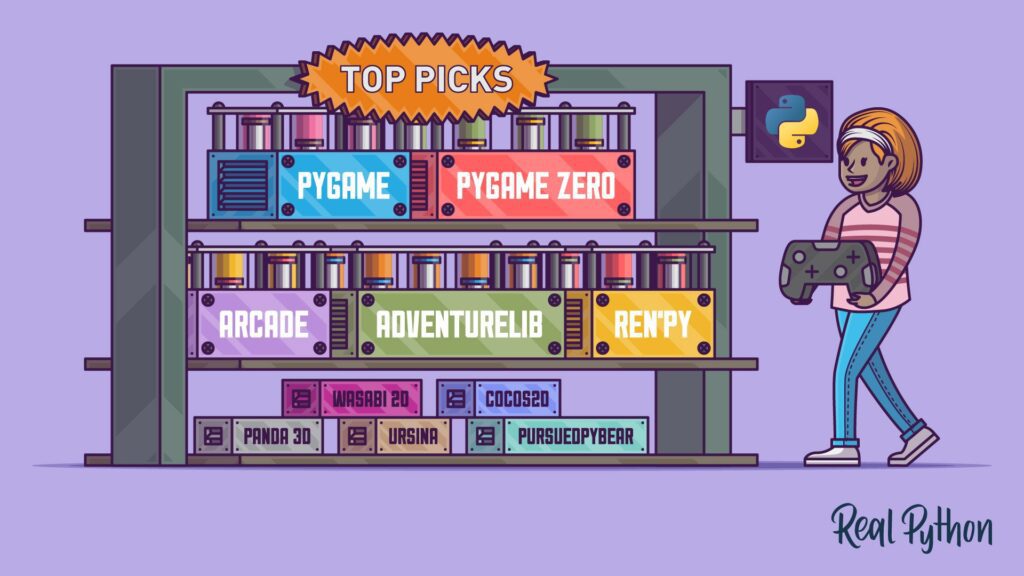Game design involves creating games, including gameplay mechanics, visual style, audio design, and player experience. Understanding the critical principles of game design is essential, such as gameplay mechanics, game flow, player feedback, immersion, and replayability. Good game mechanics must be intuitive yet challenging, while the pacing and rhythm of the game must keep players immersed from the start to the end. Positive player feedback is crucial, and immersive designs must prioritize a detailed world, captivating story, and excellent graphics and sound, while replayability is critical to ensure players can engage multiple times. Game design requires careful consideration of multiple factors.
The Building Blocks of Game Design: Key Principles for Crafting Compelling Gameplay
Game design is the process of creating games from start to finish. Game designers are responsible for every aspect of the game, including the gameplay mechanics, the visual style, the audio design, and the overall player experience. Whether you’re new to game design or an experienced developer, understanding the key principles of game design is crucial for crafting compelling gameplay experiences.
Principle 1: Gameplay Mechanics
Gameplay mechanics refer to the rules, systems, and interactions that form the core of a game. Mechanics can include everything from movement and combat to resource management and puzzle-solving. Good game mechanics should be intuitive and easy to understand, yet challenging enough to keep players engaged.
For example, in the popular game Candy Crush, the main gameplay mechanic revolves around matching colors and shapes to clear levels. The mechanic is simple enough for anyone to understand, but the levels become increasingly difficult as players progress. This balance of simplicity and challenge is key to creating satisfying gameplay mechanics.
Principle 2: Game Flow
Game flow refers to the pacing and rhythm of a game. A well-designed game should have a smooth and immersive flow that keeps players engaged from start to finish. This involves carefully balancing the difficulty of the game, providing enough challenge to keep players interested without becoming frustrating or overwhelming.
For example, in the game Super Mario Bros., players start with levels that are relatively easy and straightforward, allowing them to get a feel for the game mechanics. As players progress through the game, they encounter more difficult levels with new challenges and obstacles. This gradual increase in difficulty keeps players engaged and motivated to keep playing.
Principle 3: Player Feedback
Player feedback is an essential component of any game design. Players need to feel that their actions have consequences and that they are making progress towards their goals. Feedback can take the form of visual and audio cues, such as a sound effect when a player successfully completes a task, or a congratulatory message when they level up.
For example, in the game Overwatch, players receive visual and audio feedback for their actions, such as a hit marker when they successfully hit an enemy, or a voice line from their character when they make a particularly impressive play. This feedback helps to keep players engaged and motivated to continue playing.
Principle 4: Immersion
Immersion is the degree to which a player feels fully immersed in the game world. A game design that prioritizes immersion should provide players with a rich and detailed world to explore and interact with. This can involve creating a compelling story, beautiful graphics and animations, and immersive sound design.
For example, in the game The Elder Scrolls V: Skyrim, players can explore a vast world filled with rich lore, detailed environments, and immersive sound design. The world feels alive and dynamic, with NPCs going about their daily lives and events unfolding in real-time. This kind of immersion helps to create a truly memorable gaming experience.
Principle 5: Replayability
Replayability is the degree to which a game can be played multiple times and still feel fresh and engaging. Good game design should encourage players to replay the game, whether through different difficulty levels, unlockable rewards, or multiple endings.
For example, in the game The Legend of Zelda: Breath of the Wild, players can complete the game in various ways and with different approaches. The game encourages players to explore and experiment, whether by discovering hidden treasures or taking on challenging side quests. This replayability helps to keep players engaged long after their initial playthrough.
Conclusion
Game design is a complex and iterative process that requires careful consideration of numerous factors. By understanding the key principles of game design, including gameplay mechanics, game flow, player feedback, immersion, and replayability, designers can craft compelling and engaging gameplay experiences that will keep players coming back for more.
